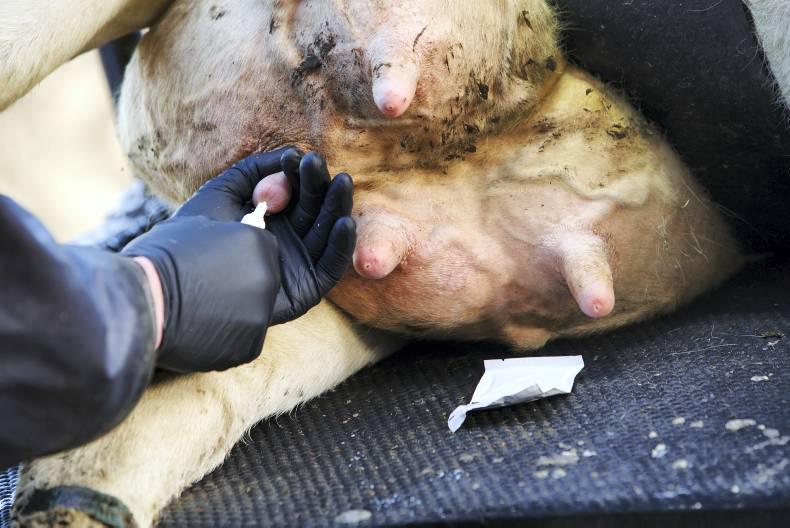Summer mastitis or dry cow mastitis is a common condition affecting cows and heifers in Ireland. It is caused by the bacteria Arcanobacterium pyogenes and anaerobes such as Peptostreptococcus indolicus, and as the name suggests is primarily seen between May and September.
In terms of general mastitis prevention, the most important anatomical defence of the cow is the integrity of the teat end or teat orifice.
This holds true for summer mastitis also.
Bacteria cannot gain entry to the mammary gland (udder) if the teat end is closed and undamaged.
In suckler cows, the time of highest risk is immediately after the calf sucks the cow, as it takes over 30 minutes for the teat end to fully close again.
In the case of heifers and dry cows, teat end damage from rough environments, e.g. scratches from thorns/ briars, is necessary to predispose to summer mastitis and to facilitate entry of bacteria through weakened teat orifices.
Frequently, in hot summer weather conditions or wet weather conditions, cows will seek the shade/shelter of ditches or trees leading to an increased risk of teat scratches.
The other main contributor to this condition is the vector spread of the causative bacteria onto the teat skin by flies.
Symptoms
Summer mastitis is a serious condition and can be fatal if left untreated. Once the offending bacteria gain entry to the mammary gland, they lead to severe tissue damage and the production of large amounts of toxins. Often the first sign the farmer will notice is stiffness when the animal is walking. On closer inspection, the affected quarter will be hard, hot and swollen. The mastitic milk from a case of summer mastitis is thick and curd-like with a characteristic foul smell.
In most cases, toxins produced by the bacteria and the damaged tissue will gain entry into the cow’s bloodstream leading to septicaemia (blood poison).
These cows will be extremely sick and dull, with congested mucous membranes (redness around the eye), high heart rates, high temperatures (40ºC or 104ºF) and swollen joints. Prompt treatment is crucial in these cases. Some cows are able to wall off the
infection without showing systemic signs. Eventually, pus may burst out through the skin from the abscess formed within the affected quarter.
In all cases of summer mastitis, there is irreversible damage done to the milk producing tissue with glandular function lost.
Treatment
There is often a very poor response to antibiotic treatment in cases of summer mastitis.
Antibiotics are often denatured or ineffective in the presence of such viscous purulent mastitis within the gland. Certainly, cows with signs of septicaemia should receive veterinary attention with antibiotics, anti-inflammatories and fluids to combat toxic shock and to prevent the spread of infection to other organs in the body. In early cases, stripping out the mastitic milk several times a day will aid in recovery and prevent septicaemia in the cow. However, surgical amputation of the teat is indicated in the majority of cases to release the mastitic milk and associated toxins.
This surgery should be performed by your veterinary practitioner under local anaesthetic, as there is a danger of serious haemorrhage (bleeding) if the amputation is carried out too high or near the base of the teat. It is especially risky to perform vertical incisions in the wall of the teat.
Control/prevention
Fly control is crucial in the prevention of summer mastitis. Options for fly control include pyrethroid pour-ons, insecticidal ear tags and Stockholm tar applied to the teats. Heifers and dry cows should be monitored for evidence of teat damage, which may indicate problems with the environment, as well as early cases of summer mastitis so that treatment can be implemented quickly. In relation
to dry cows, the use of teat sealers together with dry cow therapy is a very effective preventative measure and highly recommended.






 This is a subscriber-only article
This is a subscriber-only article









SHARING OPTIONS: